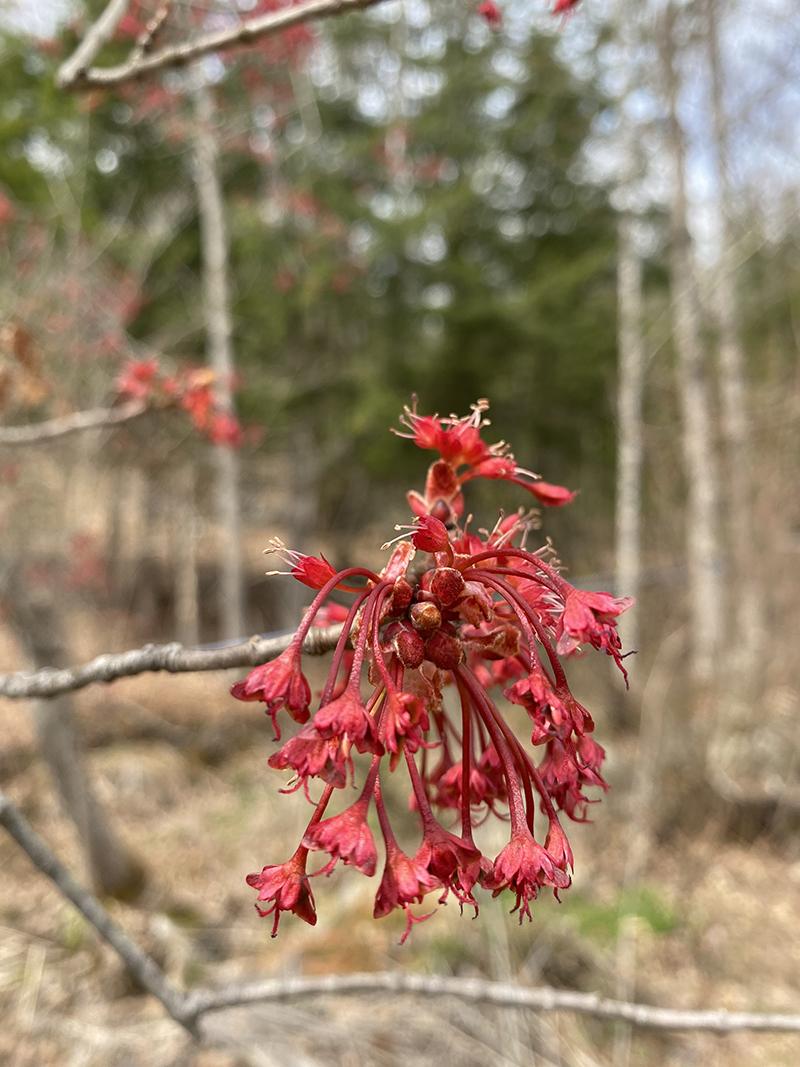- Tags:
- Wildlife,
- Forestry,
- Something Wild

This closeup shows male red maple flowers under female flowers. (Photo: Dave Anderson)
"Something Wild" is joint production of NH Audubon, The Society for the Protection of New Hampshire Forests & NHPR.
We recommend listening to it in its original format but a transcript of the show is also below. (Originally aired March 26, 2021)
You can hear Something Wild on-air at NHPR every other Friday at 6:45 a.m. and 8:45 a.m., or subscribe to the Apple podcast here.
---------------------------------------------------------------------
Spring in New Hampshire is a double-edged sword. On one hand you have longer, warmer days —plants and trees are blooming! On the other hand, the pollen springtime trees produce can present an array of unpleasant seasonal symptoms.
Yet pollen is so incredibly important to our survival – we think we should give it the credit it deserves.
Our friend Sam Evans Brown is the host of NHPR’s Outside/In; when pollen makes his eyes watery and the roof of his mouth itchy this time of year, Sam likes to remember that "the pollen that you’re breathing, and that your body is freaking out over... is you know… is half of the equation of tree sex. So you’re breathing in a little bit of tree sex which is you know... just a fun thing to think about."
If you can recall your middle school science class you might remember that pollen is the male reproductive product of tree flowers — found on the anther and filament of male stamens — used to make new plant life. It needs to reach the sticky stigma, style, and ovary of the female pistils found in nearby flowers.
The trouble is that we get caught in the middle, as microscopic pollen grain from hardwood tree flowers enter and irritate our sinuses … making this a bit of a love triangle.

The pollen that doesn’t end up in your face hopefully makes its way from one flower to the next ... either by wind or insect pollinators like bees, butterflies -- even those pesky blackflies. This entire process makes LIFE possible. Without pollen, there’d be no fruits, nuts, grains or seeds - no food for birds, or wildlife, or for any of us.
Another cool thing to think about is that some plants are either male or female, like willow and aspen.
These plants are called “dioecious” which literally means two-houses.
Other trees are “monoecioius” (literally one house) where trees have BOTH male and female flowers on one plant so they can self-pollinate and be “self-fruitful.” like Mulberry, American Beech and oaks. So really when it comes to plant reproductive strategies trees can be really creative and sometimes gender fluid.
Our New England forests bloom just once in springtime – but few people tend to notice their beauty. To appreciate tree flowers individually requires branches near the ground. From a distance, they impart a lush pastel wash to New Hampshire’s hills and valleys... which imparts a subtle beauty across the landscape.
